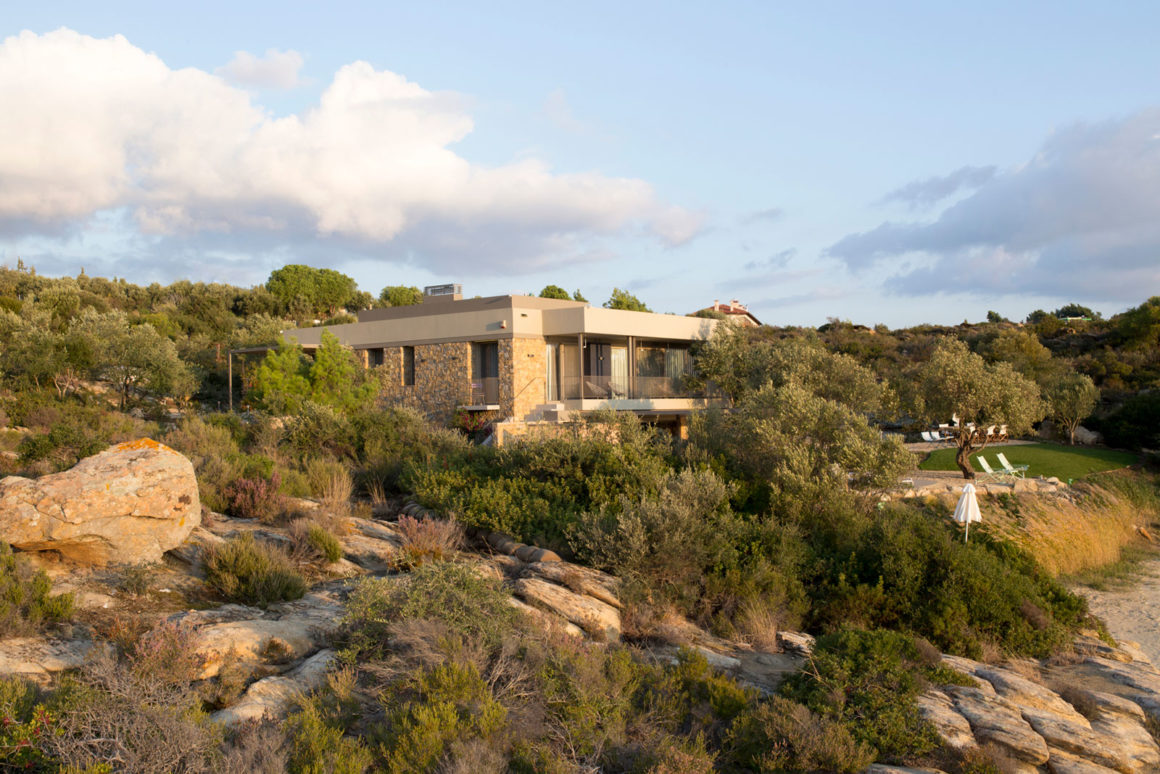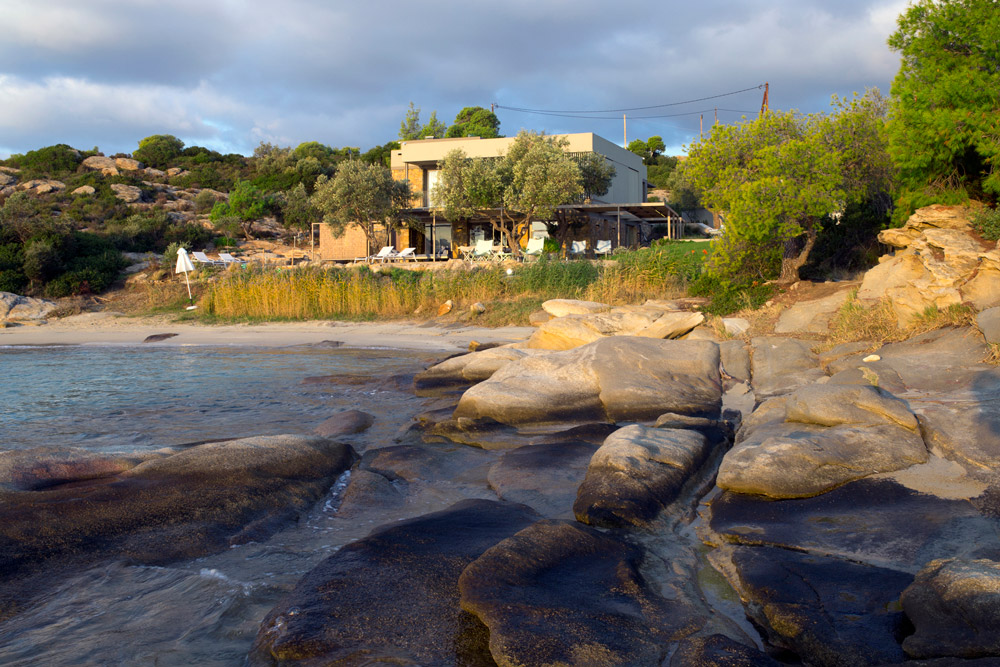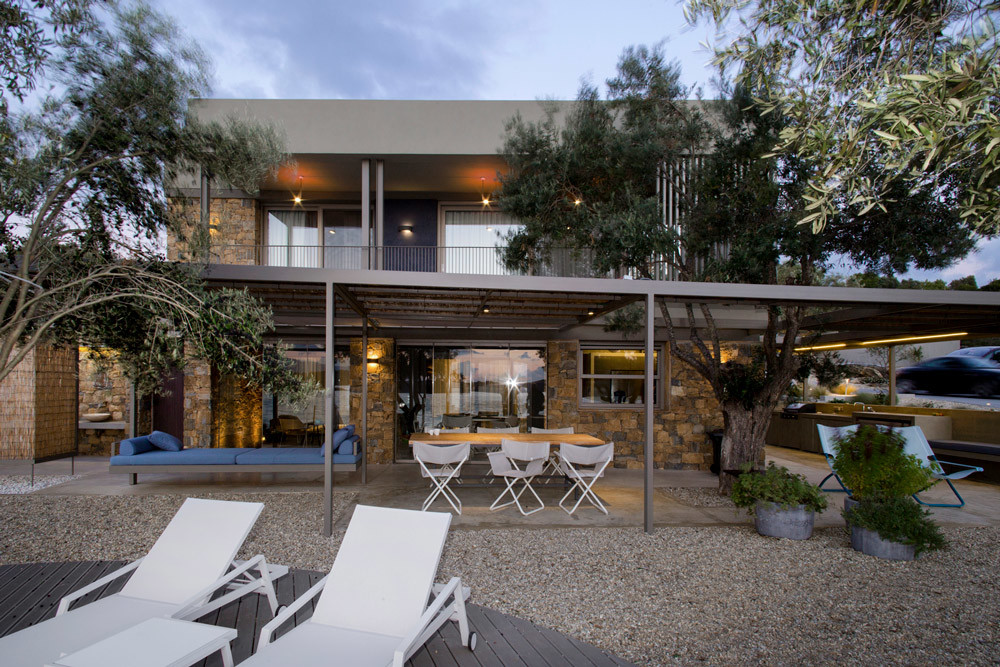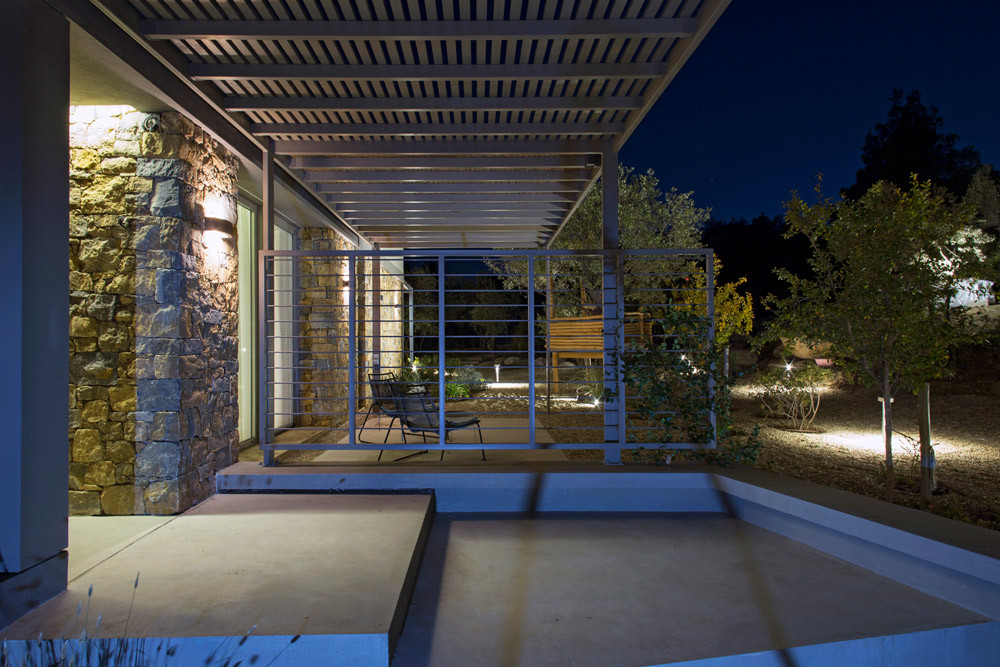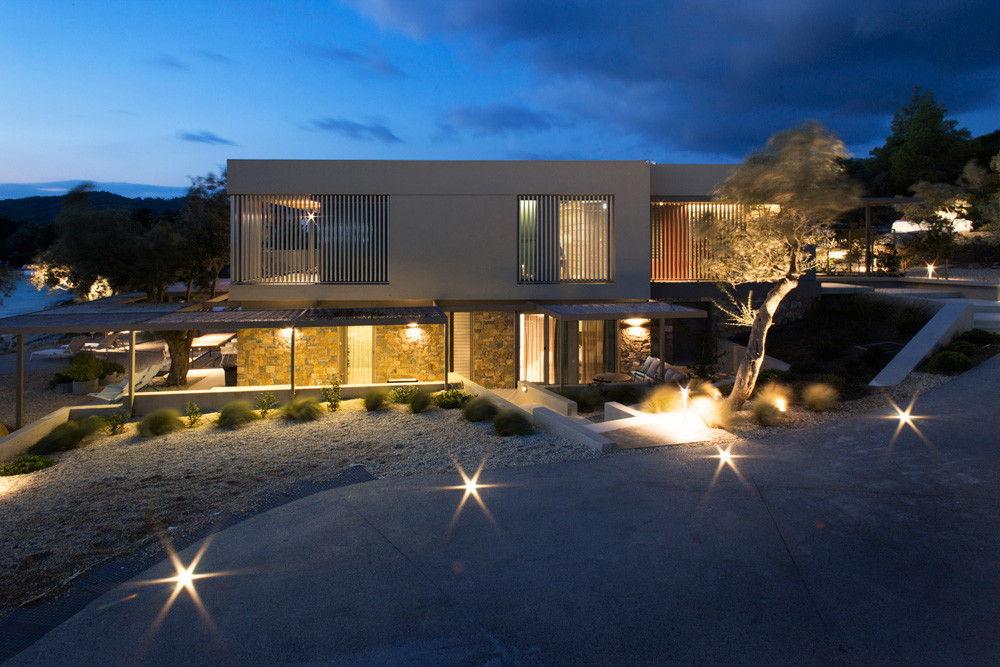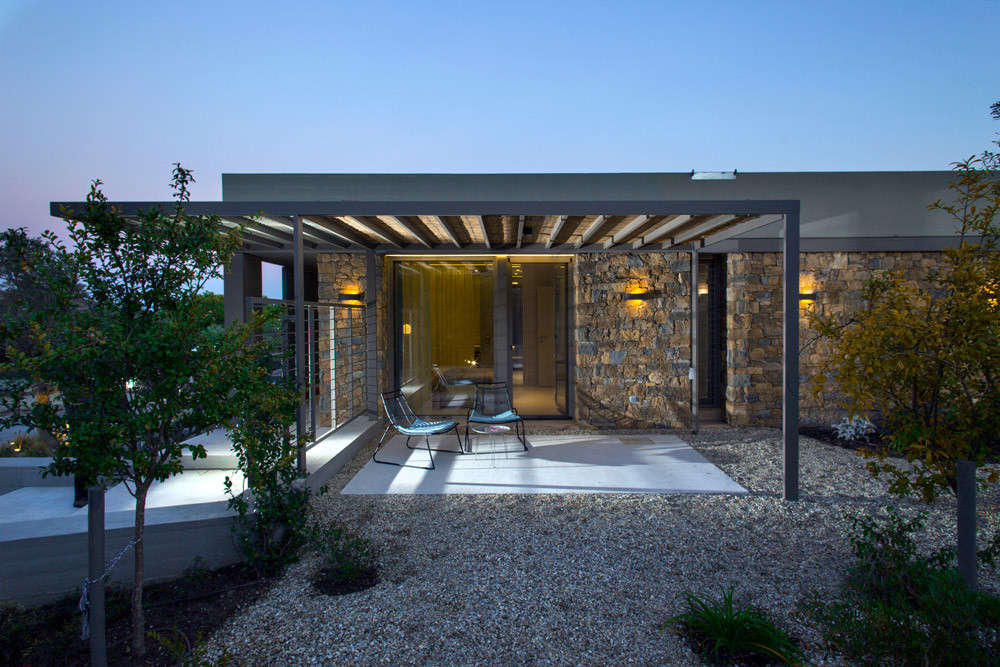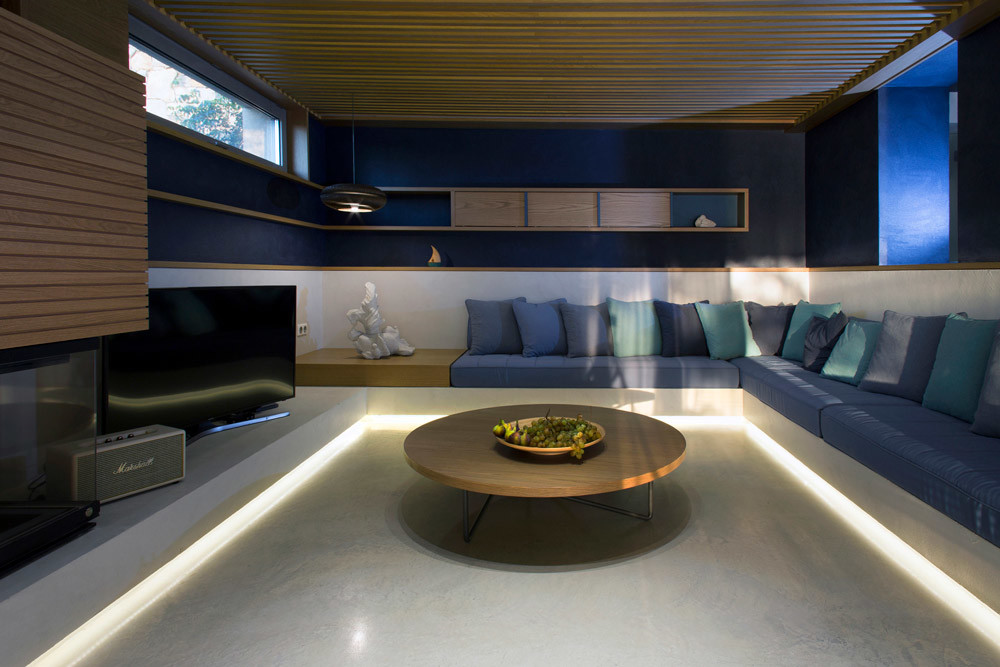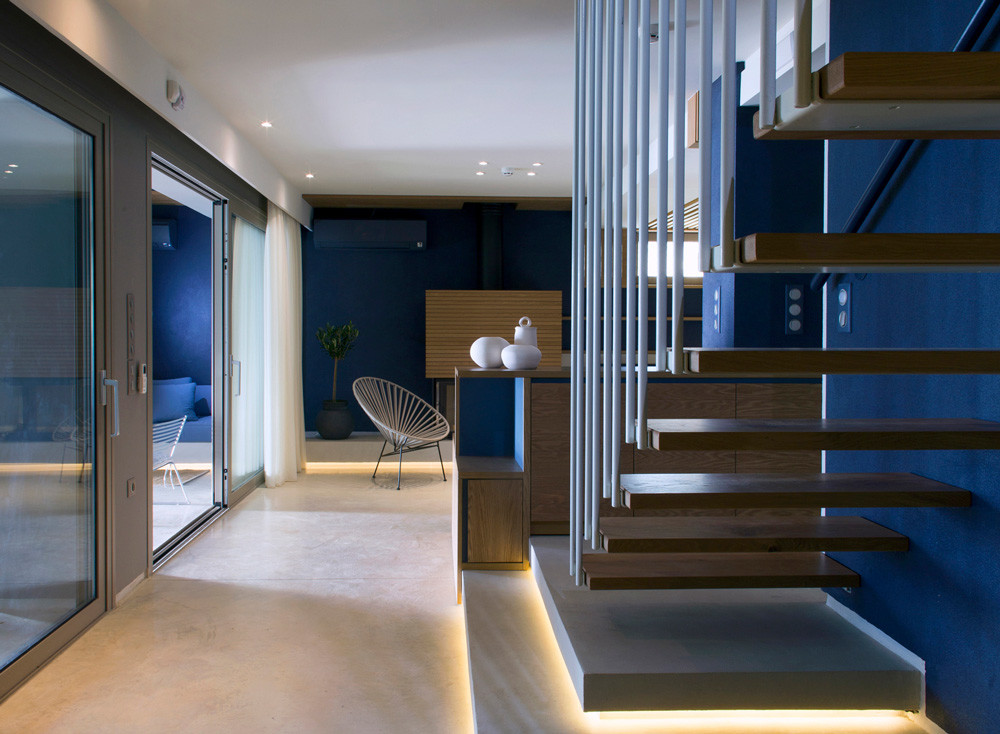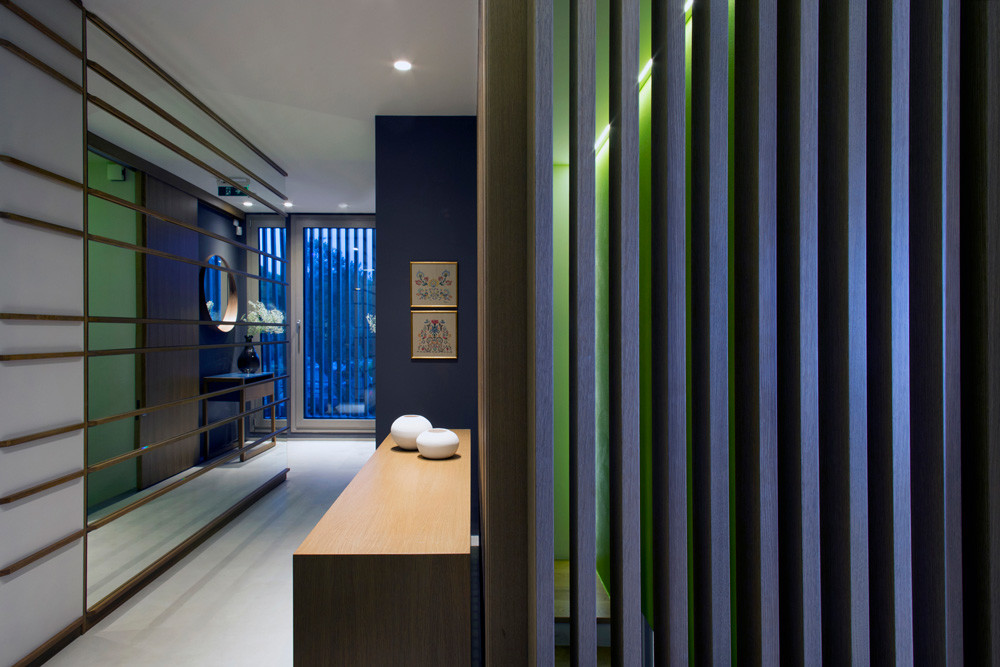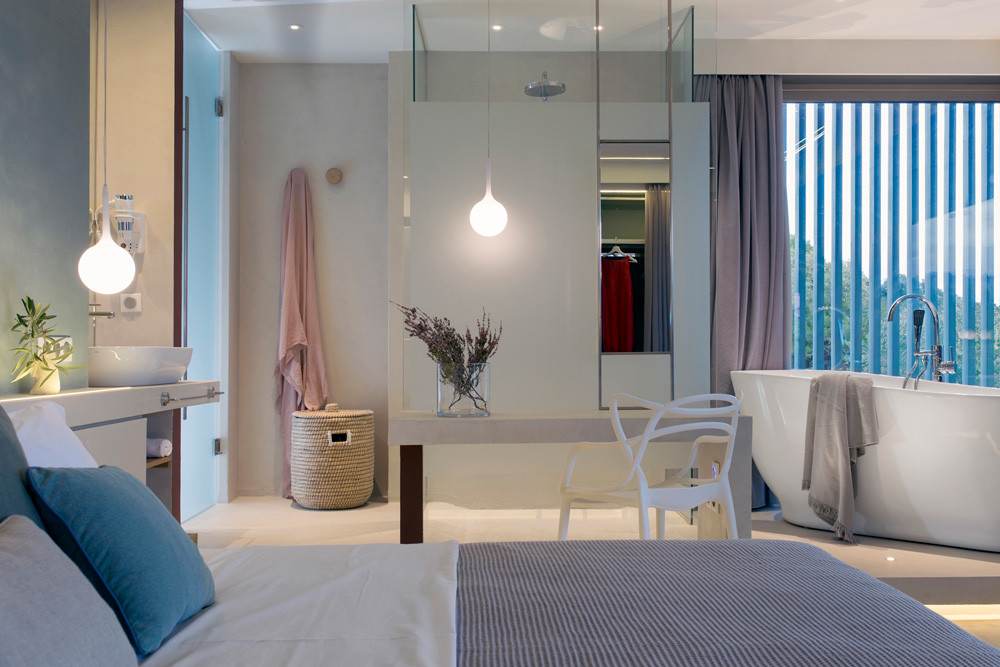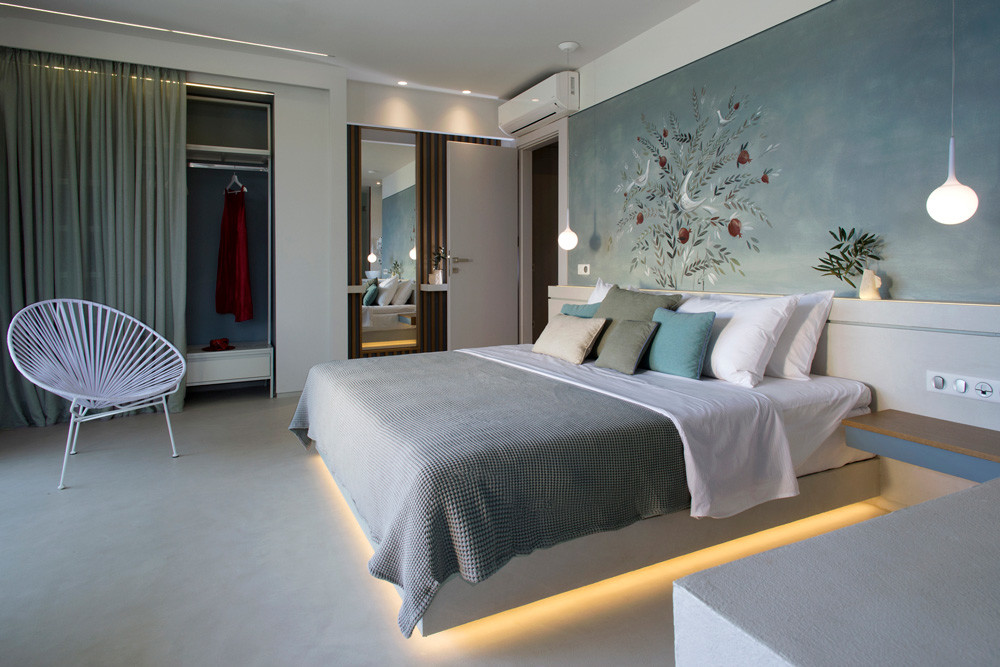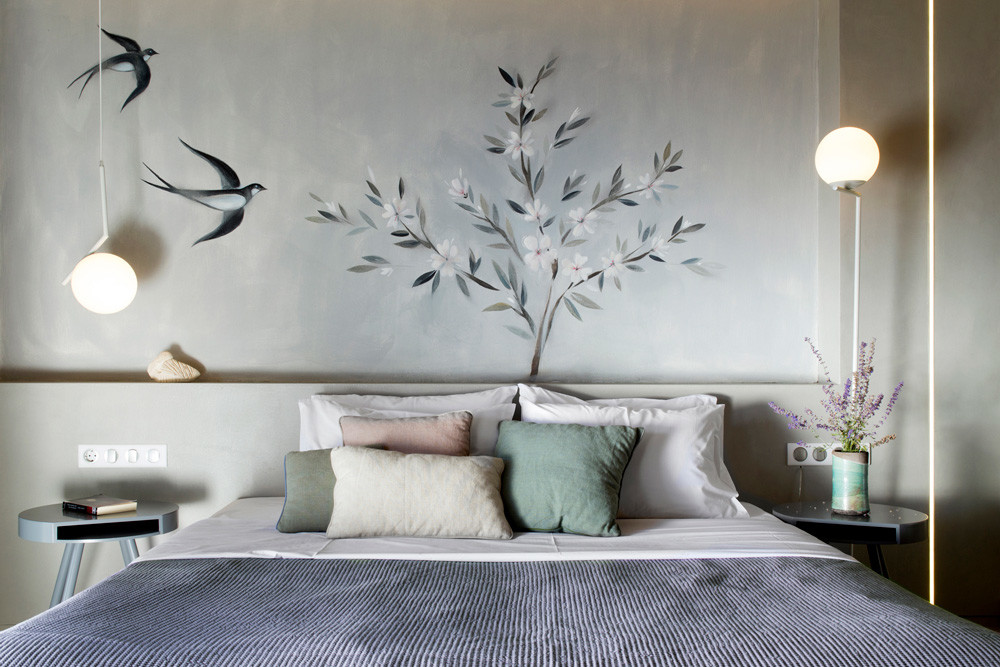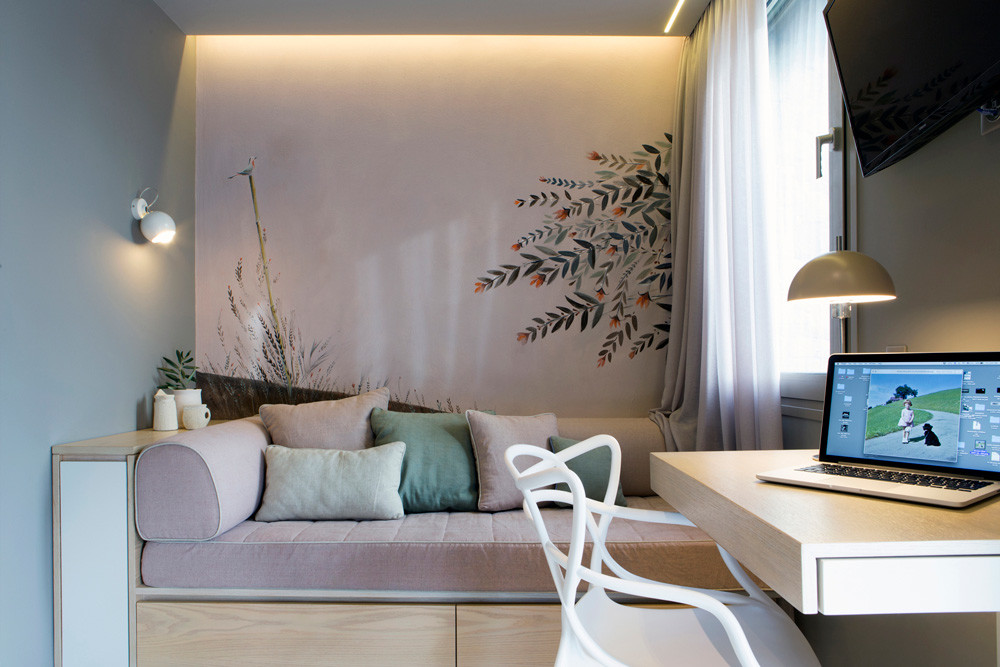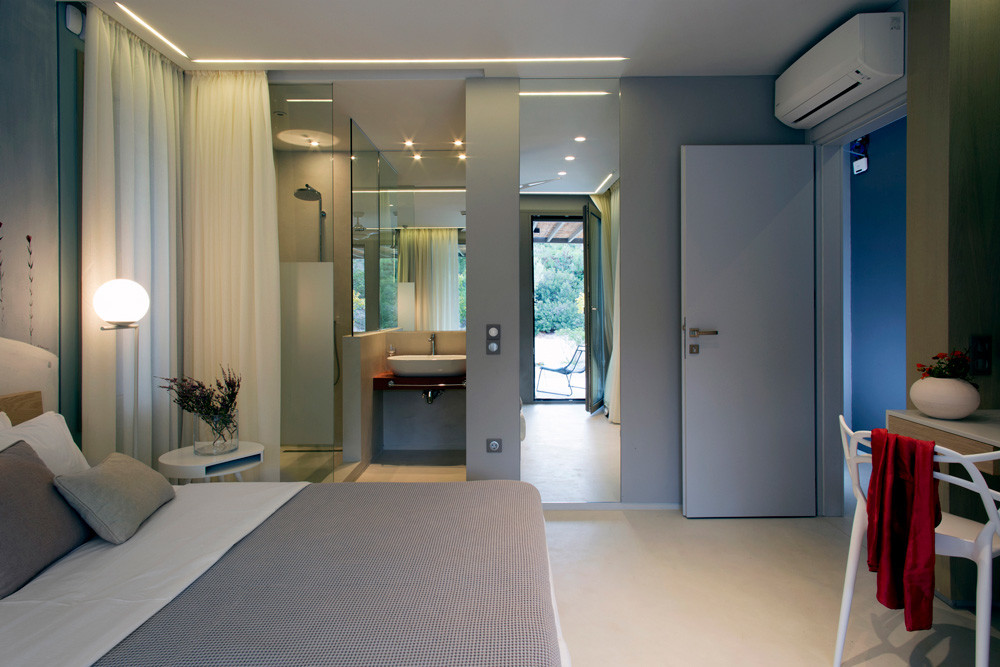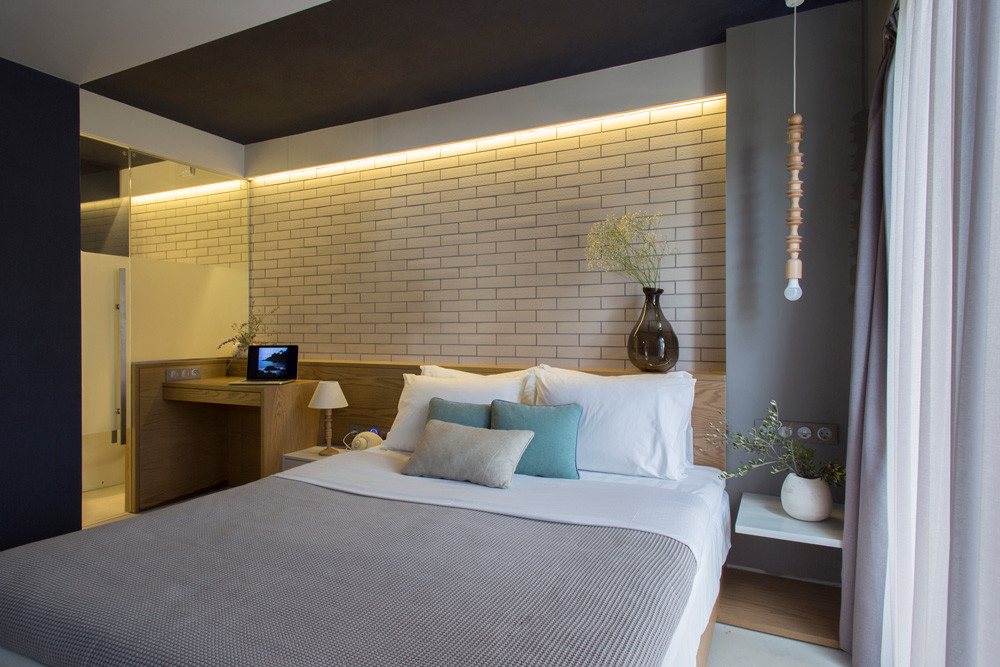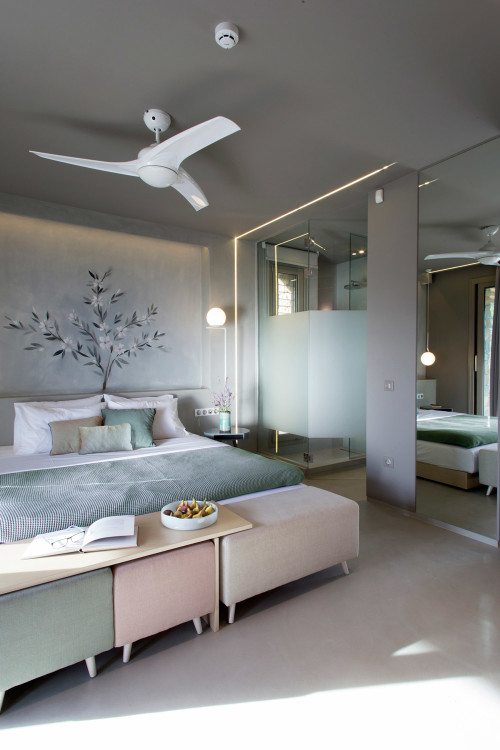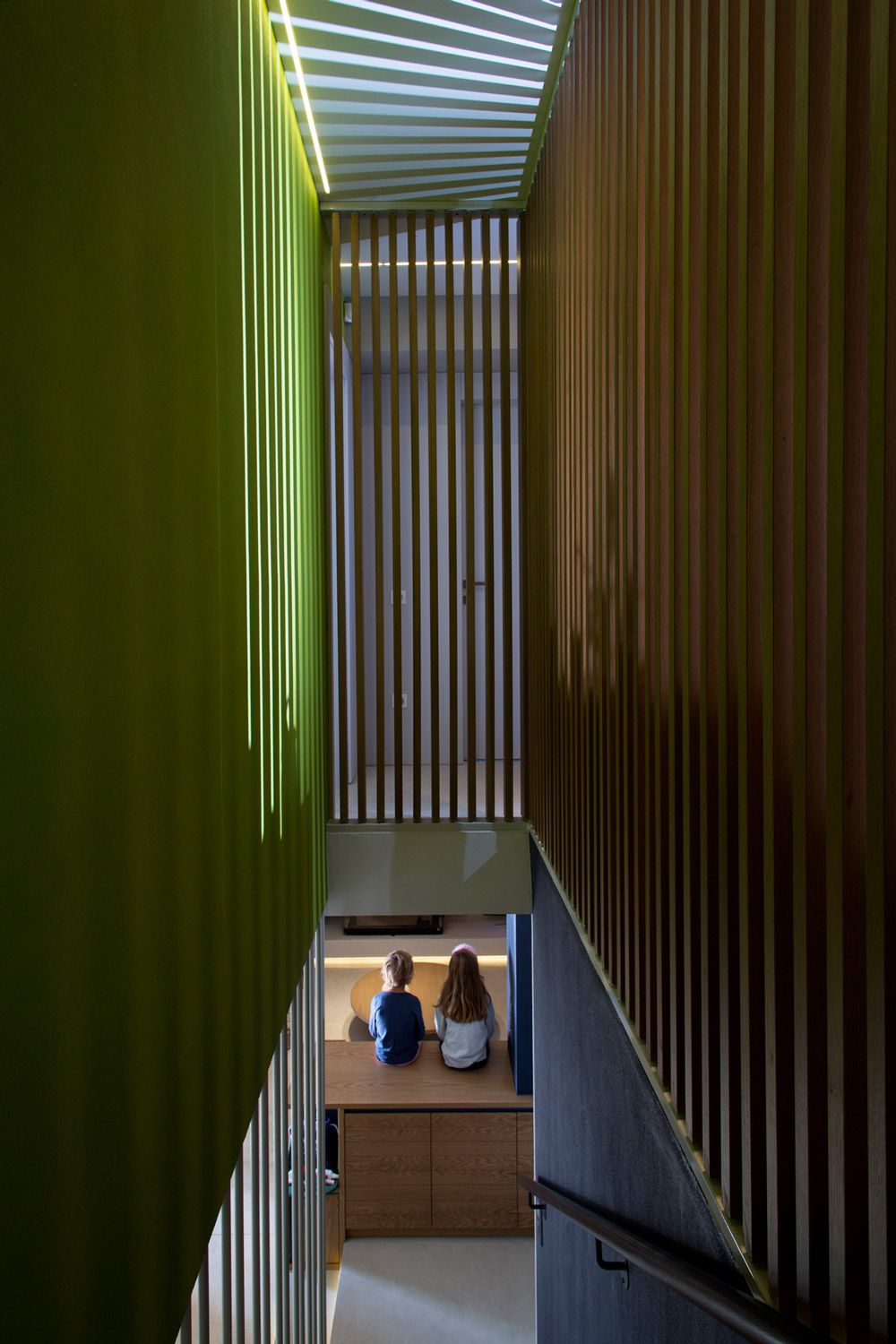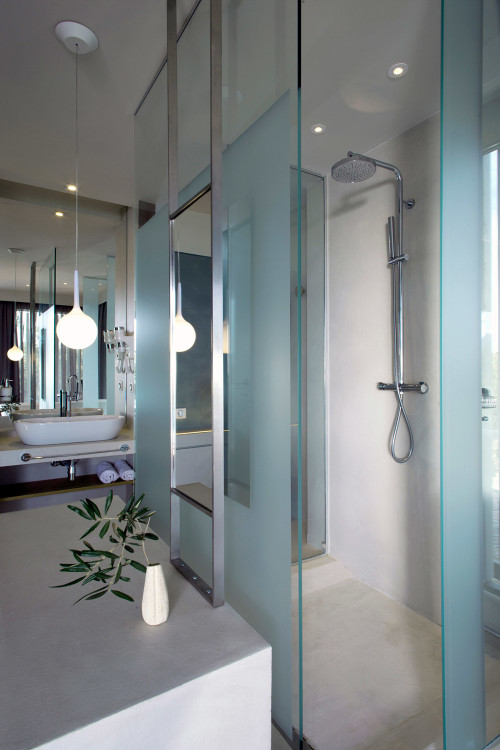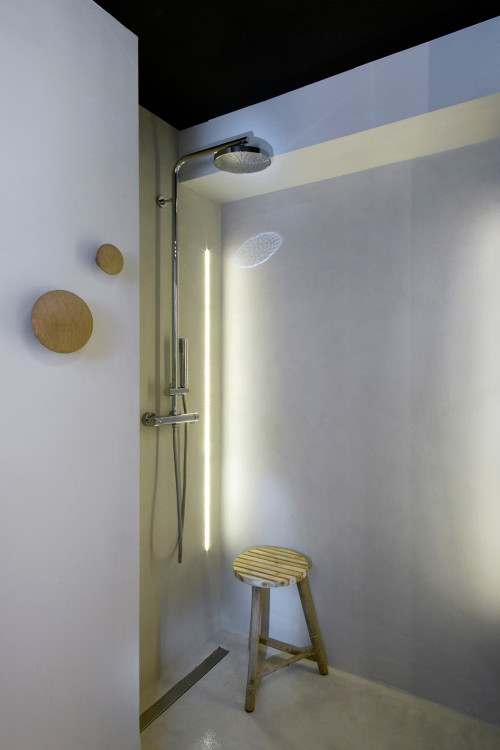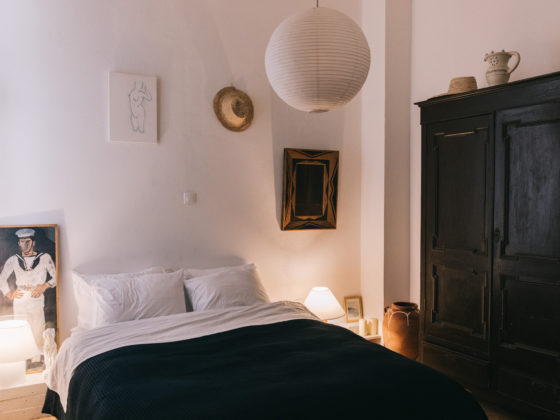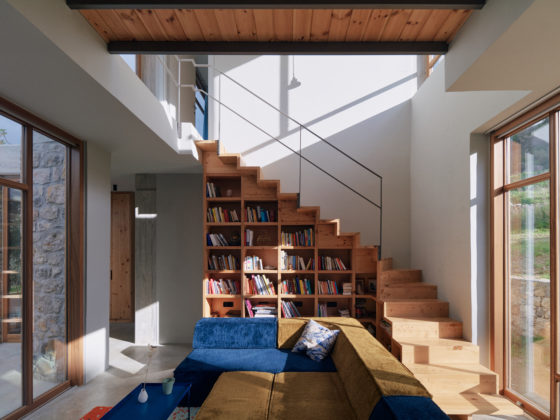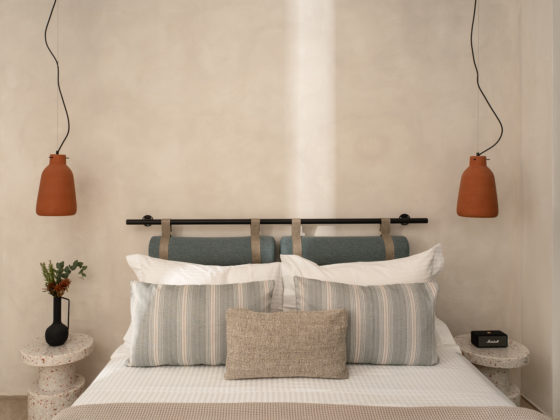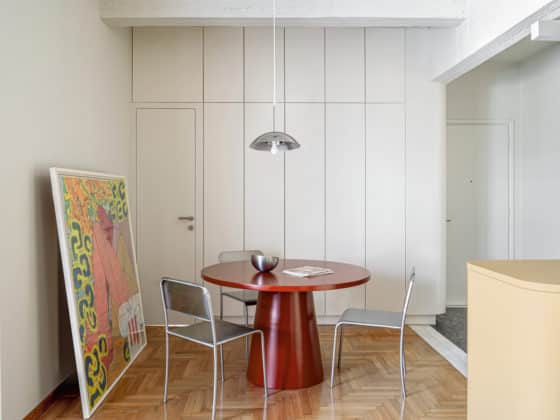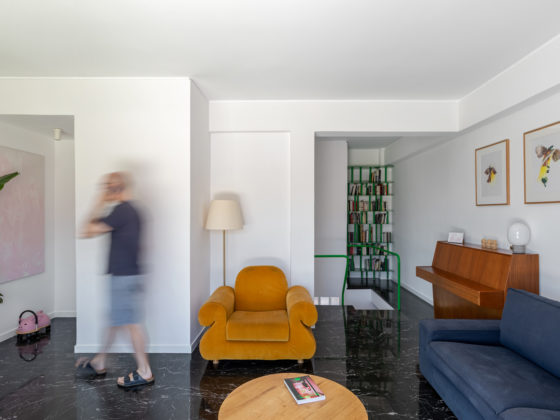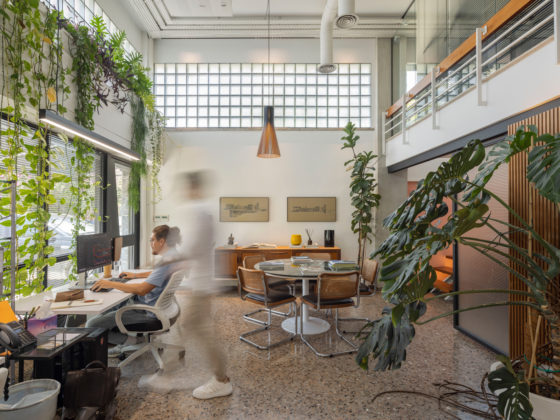Τhe residence occupies a superb location on the peninsula of Sithonia, very near the water’s edge. The landscape is composed of small beaches within a cove framed by low cliffs, chaparral, Aleppo pines and olive trees.
The site had long been occupied by the concrete frame of an unfinished building, which was the basis on which the new use of the building was planned.
The residence comprises five large rooms with en suite bathrooms, plus a living room, kitchen and auxiliary spaces.
The ground floor of the low two-story, flat-roof building is largely incorporated within the slope. Thus, while the two eastern rooms on the first floor have the privilege to enjoy a direct sea view from above, the other three enjoy immediate access to their environment via private courtyards/open-air living rooms under reed awnings.
The property is unfenced. The only clear border is the edge of the road which delimits the entrance. The landscaped environment echoes the natural forms of the slope and ends at the beach. To the local rocks and cliffs we added olive and pomegranate trees, bushes and aromatic herbs. A small area was turned into a kitchen garden so that guests can have their own fresh vegetables.
To break up the severity of the central prism forming the main building and allow for a smoother transition from the geometric-anthropogenic to the natural environment, all arbors, reed screens and exterior flooring are aligned on a different axis to that of the main main building.
“In choosing colors and materials for both the interior and exterior of the building we drew heavily on the landscape. Where the building meets the ground we had it lined with local stone, using the dry-stone technique. In this way the building seems to grow out of the slope. The stucco and coatings were painted in earth tones reflecting the sand and rocks, and combined with soft blue-green colors, inspired by the sea, pines and olive trees, which were used for furniture and textiles. Throughout the day, the colors are transformed by light entering through the reed screens and wooden awnings of the façade.
To ensure no interior space appears washed out, we used a livelier wood varnish, a darker blue and brighter green wherever natural light is weak. The contrast between the stronger colors and the white ceilings and floors creates a tension that allows for a better balance between exterior and interior.
In the four upstairs rooms we made use of Dionyssis Tsasis’ talent as a painter to decorate large wall surfaces with original works, based on elements of greek culture and nature. Inspired by countryside and garden, these works directly quote traditional Greek art. Each room is unique, with its own theme: pomegranate tree, olive tree, swallows and wildflowers, poppies.
Our main objective was to avoid overdesigning the space or making it too loud. We aimed for a simple, light, spare architectural space with a well-balanced, timeless design that would not compete for attention with the loveliness and simplicity of the landscape but converse harmoniously with it, allowing guests to feel at home.”
